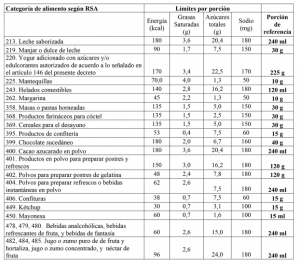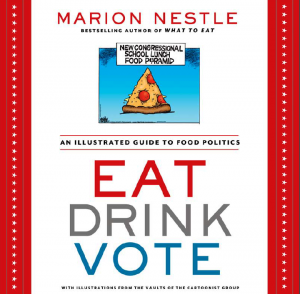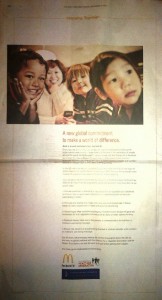NY State Appeals Court says No to Portion Cap Rule
The New York State Court of Appeals issued a decision this morning on the Portion Cap Rule:
PIGOTT, J.:
We hold that the New York City Board of Health, in adopting the “Sugary Drinks Portion Cap Rule”, exceeded the scope of its regulatory authority. By choosing among competing policy goals, without any legislative delegation or guidance, the Board engaged in law-making and thus infringed upon the legislative jurisdiction of the City Council of New York.
Although the decision applies to the Portion Cap Rule, it has a much larger meaning.
The ruling means the Court does not accept the idea that health departments have the right to set health policy for city residents. I suspect we will be seeing the implications of this ruling for a long time to come.
The city health commissioner, Mary Bassett, issued a brief statement:
Today’s ruling does not change the fact that sugary drink consumption is a key driver of the obesity epidemic, and we will continue to look for ways to stem the twin epidemics of obesity and type 2 diabetes by seeking to limit the pernicious effects of aggressive and predatory marketing of sugary drinks and unhealthy foods.
This doesn’t sound like the city will appeal to the U.S. Supreme Court, but maybe it’s too early to say.
I will post additional comments later, as they come in. Stay tuned.
Additions:
As I just told a reporter, ”
The key issue here is whether health departments have the right to set policy to protect the health of citizens under their jurisdiction. This court says no, but this seems precedent-setting. The medical community most definitely should support measures to improve the environment of food choice. Changing the behavior of individuals is extremely difficult and rarely successful; it works much better to improve the environment so it’s easier for individuals to make healthier choices.
On the court decision: The vote was 4 to 2, with one abstention. Here’s a quotation from Judge Susan Read’s dissenting opinion:
What petitioners have truly asked the courts to do is to strike down an unpopular regulation, not an illegal one…To sum up, if the People of the City or State of New York are uncomfortable with the expansive powers first bestowed by the New York State Legislature on the New York City Board of Health over 150 years ago, they have every right and ability to call on their elected representatives to effect change. This Court, however, does not…The majority fails to advance any persuasive argument why the judiciary should step into the middle of a debate over public health policy and prohibit the Board from implementing a measure designed to reduce chronic health risks associated with sugary beverages just because the Council has not chosen to act in this area.
The New York Times also quotes from this dissent:
In a blistering dissent of the opinion, Judge Susan P. Read wrote that the ruling ignored decades of precedent in which the Board of Health was given broad purview to address public health matters, such as regulating the city’s water supply and banning the use of lead paint in homes. The opinion, Judge Read wrote, “misapprehends, mischaracterizes and thereby curtails the powers of the New York City Board of Health to address the public health threats of the early 21st century.” One justice in the majority, Judge Sheila Abdus-Salaam, seemed to share those concerns, writing in a separate concurrence that “no one should read today’s decision too broadly.”
It’s always amusing to hear what the Washington Legal Foundation, which filed an amicus brief supporting the soda industry’s position, has to say:
New York City’s misguided soda ban was arbitrary, paternalistic, and profoundly inconsistent with separation-of-powers principles. The Court’s decision to strike it down vindicates fundamental constitutional values, protects consumer freedom, and encourages sound regulatory policies.
Jane Delgado of the National Alliance for Hispanic Health’s issued a statement:
We are deeply disappointed that the court today limited the power of the NYC Board of Health to
act on behalf of the health of New Yorkers… The portion cap rule is the right policy for New York City and communities throughout the nation facing the rise of chronic diseases, such as diabetes.






